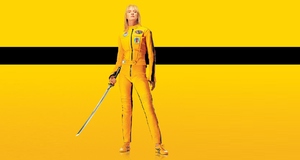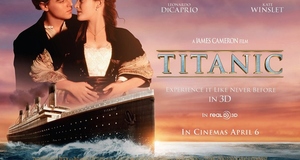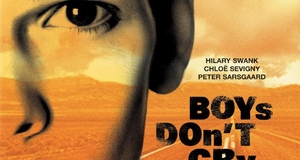Chalk Dreams: The Use of Fantasy as a Method of Rethinking Life in Ali Zaoua
By
2012, Vol. 4 No. 07 | pg. 1/2 | »
KEYWORDS:
Set in the city of Casablanca, Morocco, Nabil Ayouch’s Moroccan film Ali Zaoua: Prince of the Streets (2000) drifts between reality and fantasy to depict the realistic experiences and animated dreams of four young street urchins, Ali, Kwita, Boubker, and Omar. Chalk drawings recur throughout the film as a physical representation of the boys’ dream to move beyond their deprived lives on the streets. Unable to achieve modernity through physical or monetary means, the street children use these chalk dreams to temporarily obtain the reality that they desire: a modern life with a house and a traditional family. The technique of blending dreams and reality allows the film to create a dialogue about the dichotomy in Morocco between wealth and poverty, modernity and tradition. It is only in the moments of fantasy that the boys are able to imagine a world beyond the streets in which they can become a part of the modern society while keeping their traditional values. The film opens with images of chalk-drawings overlaid with the voice of Ali as he is being interviewed by a female reporter. He explains his outlandish dreams, goals, lifestyle, and past for both cameras – that of the interviewer and that of the film. When we finally see him, Ali is surrounded by a large group of boys, including his three companions. Ali is depicted as the clear leader of the group through his central location in the frame and the way the others hover over him. After a close-up of Ali’s face, the camera cuts to a scene with the four boys running and playing. Ali tells Kwita that he is going to leave them and go to his island, and then shows his companion his most prized possession – a compass that will guide him in a land with two suns. From this point on, the story drifts back and forth between reality and fantasy by intertwining realistic experiences with animation and dreams. The chalk drawing at the beginning recurs and progresses throughout the film as a physical representation of Ali’s dream -- to escape from his life on the streets to this mythical island with two suns. However, after a gang of boys kills Ali, his dream is transferred to his friends, whom he gave a hope of escape when he passed on his compass. The compass serves as a reminder of Ali’s dreams, and of the modern world that the boys cannot afford to enter. Unable to achieve modernity through physical or monetary means, the street children the chalk dreams to obtain the reality that they desire. If the two suns represent the two modes of life in Casablanca, Ali’s compass is the dreams that allow the children to navigate between them. The fantastic dreams serve as the link between the modern and traditional aspects of the children’s lives, thereby inspiring and moving them to work hard and actually fulfill those desires to unify the two sides of society and live happily.Nabil Ayouch’s use of dreams as a way to cut the divide between the wealthy, modern society in Casablanca and the more traditional, poor one can be seen throughout Ali Zaoua. However, before it can create a bridge between the two modes of life, the film must first show the separation between the two within the city of Casablanca. After Ali’s death, his companions drop his body down into a hole in the ground – one in which we later find out is full of chalk drawings of Ali’s dream island. The film then fades to white and cuts to an image of the Casablanca Twin Center -- two towers that each rise twenty-eight stories into the sky (Emporis). These towers are being shown from a helicopter shot that emphasizes the structures’ immense size in comparison to the rest of the city (12:30). The towers are in the center of the frame, thus symbolically central to the city. In an attempt to place Kwita, Boubker, and Omar within the landscape of the city, the camera pans over the towers and surrounding metropolis to the sounds of Boubker singing an Arabic song. His song is a singular cry of remorse supposedly arising from a part of the city that isn’t even on the screen – you cannot see the dock where the boys have hidden Ali, just the concrete jungle that is Casablanca’s downtown. When the scene cuts, the camera is seemingly moving down from the aerial view to a closer shot within one of the city’s concrete buildings that is half destroyed (12:47). It pans down to the boys, two of whom are sharing a cigarette while the other sings his lament. If the boys are being presented as a part of the city at all, it is the decrepit ruins that they inhabit, not the well-built, modern architectural portion that was represented by the image of the two towers. The film is depicting a clear divide between the wealthy portion of the city that has modern architecture and the poor street-urchins who spend their days in old, run-down buildings. The use of the two towers as a symbol of modernity is not a technique unique to Ali Zaoua. “Repeatedly visible as imposing landmarks in the backdrops of numerous Moroccan films … the Twin Towers and La Grande Mosquee are two monumental symbols that most effectively represent contemporary Morocco as a country caught between two opposing poles: one representing the modernist, capitalistic, secular future; the other the religious, archaic, obscure past” (Orlando, 76). While the film also shows La Grande Mosquee as a symbol of tradition – Boubker is even seen reading a prayer from a book with La Grande Mosquee drawn on it (52:08) – there is less of an emphasis on this aspect of tradition. The mosque is in the background of some scenes, and Kwita does visit a smaller mosque, but he is turned away because he does not have the money to bury Ali and is not “pure” enough to enter the grounds anyway (16:22-17:10). It is ironic that Kwita is turned away from the mosque because the only reason the boys ever seek to be a part of this aspect of tradition is because of their lack of money. If they could afford to bury Ali without the mosque’s help, Kwita would never have turned to it as a resource and Boubker would not have had to read the prayer book for things to say at the funeral. The main reason that this traditional side of Moroccan life is brought up in Ali Zaoua is to show that though the boys are poor and unable to participate in modernity, they cannot turn to traditional institutes for help either. They want to aspire towards traditional Islamic familial goals – getting married and raising a family – but that is the extent of their “tradition.” They look to wealth and the tools of modernity as their only hope for that happy family life and Ali’s proper burial. The aspirations of these poor boys play out through the dream sequences of the film, in which a sailor meets a girl and starts a family on an island away from the stress of poverty. Boubker’s sorrowful song in Ali Zaoua is one of many cries for help that Moroccan cinema has to confront. “Like many former colonized countries in the postcolonial era, Morocco seeks to revisit its past by reconstructing its history to reflect the voices that have been effaced by violence, human rights abuses, and oppressive regimes since the end of French occupation in 1956” (Orlando, 1). As a country with between 10,000 and 14,000 street children (Carter, 272), the nation is not lacking in underrepresented voices. In an effort to confront these voices, Ayouch’s film calls attention to “a social ill and some of the difficulties street children face, not least of which is a culture of violence amongst street children themselves” (Carter, 272). One method of answering this cry for help is to offer the children a fantasy – a dream of escaping their miserable lives on the street. Author Valerie Orlando writes in her book Screening Morocco: Contemporary Film in a Changing Society that “the ‘deregulation’ of narrative systems, melding the imaginary and real, has become a thematic staple of the Moroccan cinematic oeuvre” (Orlando, 6) in order to recreate the culture and identity lost to the many citizens who have suffered these abuses (Orlando, 5). “Moroccan authors and filmmakers, seeking to recapture the past through literature and film, waver between the mythical and the real in their efforts to depict the reality of their history. Constructing a world of images between the real and the surreal or unreal creates a fragmented narrative space, whether in text or film” (Orlando, 5). This filmic technique is manipulated in Ali Zaoua through the use of the animated chalk dreams that offer up modernity as a way of achieving traditional family values. The ability to own a boat, have the skills to operate it and know which direction to sail, and the capacity to buy or build a home are all modern ideas that the real boys of the film do not have access to. Kwita fantasizes about a life in which he can afford to learn or buy such things in order to attain a girlfriend or wife and the happiness that he assumes would come with actually living in the modern world. His dreams are based off of the fairy tale that Ali told him in the beginning of the film, but they provide for him a means of remaining happy and hopeful while being unable to actually attain many of these goals. After Ali’s death his dream becomes the focus of the boys’ lives – it gives them a purpose and something to aspire towards. They attempt to give Ali a proper burial in hopes that it will fulfill his dream of sailing away to happiness. They believe that he will be the “prince of the island” in the sky if they can only make sure that he is buried in the right way (1:22:17). As a religious ceremony, the idea of performing a burial in hopes of sending the deceased to heaven is an important part of Islamic tradition (Abu Aisha). However, it is clear that the mosques do not want to help the boys, so they do the best they can in uniting the modern ideals of burial with their own traditional beliefs in prayers and rites. After Ali’s death Omar begins to complain that perhaps the boys should not have left Dib’s group with him. Kwita reminds Omar that the reason Ali took them to the port and away from the dominant street gang was to fulfill his dream of embarking on a journey (14:17-14:30). It is the remembrance of a dream that keeps the boys strong when their life is falling to shambles. Kwita is determined to give Ali a worthy burial (thus trip to the afterlife) and says, “the whole world will cry! The whole city--even you!” (14:44) as he points at a clear sign of modernity – a billboard with an ad for facial cream. The intersection between people that can buy or sell such products and those boys who just want to have money to live creates anger in the boys. Throughout the movie, Kwita uses this attachment to Ali’s dream as a way of dealing with his anxiety towards modernity while struggling to give his friend a traditional ceremony. His own desires are relayed through a progression of animated chalk dreams, which provide an outlet for his emotions and a way of working through the conflicts between modernity and tradition, wealth and poverty. The first time Kwita actively fantasizes about the island with two suns occurs directly after he returns to a school yard where he stole the wallet of a rich girl. She is wealthy and modern – she has a wallet full of money, attends school, and is later seen riding off in a car. She has access to the good things in life that as a street kid, Kwita does not. When the girl gets into the car, Kwita acts like he wants to talk to her but cannot bring himself to raise his voice enough or move closer (20:00). Behind where the girl was standing is a chalk drawing of a face. The head becomes a sailor on the water who rows until he becomes sweaty and tired. In the animation, the figure looks around and sees the sun. As he is looking up, the camera cuts to a vertical strip of real road, almost as if it were an eyeline match with the figure. The land is shown from above, placing it in the center of a body of water. The road presumably leads to the port, which the scene cuts to immediately after the camera pans down the stretch (20-21:23).Continued on Next Page » Suggested Reading from Inquiries Journal
Inquiries Journal provides undergraduate and graduate students around the world a platform for the wide dissemination of academic work over a range of core disciplines. Representing the work of students from hundreds of institutions around the globe, Inquiries Journal's large database of academic articles is completely free. Learn more | Blog | Submit Latest in Film & Media |
















